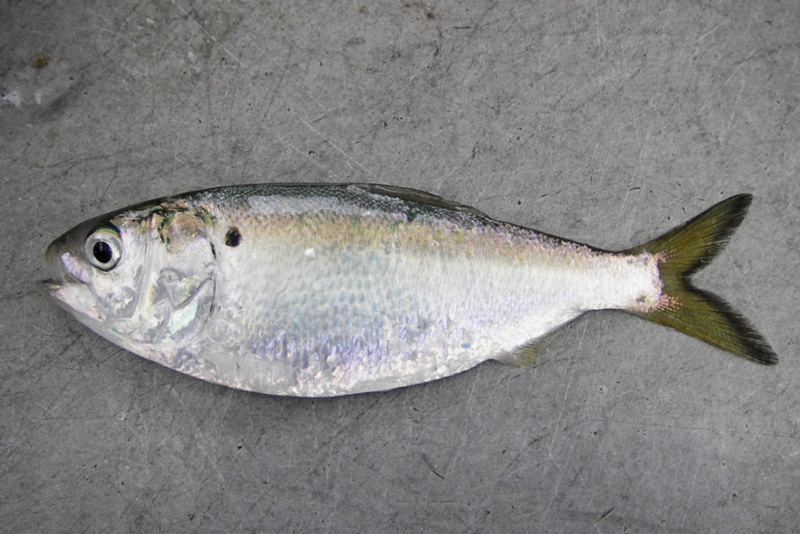The Atlantic States Marine Fisheries Commission (ASMFC) determined that there are insufficient Atlantic menhaden on the Atlantic Coast to feed critically important predators such as striped bass, bluefish, and weakfish. So, they lowered the total allowable catch (TAC) for all Atlantic Coast states from 216,000 metric tons to 192,456 tons for a 10-percent reduction. Of this TAC, Virginia was allotted 78.66 percent of the total. Virginia allocates over 90 percent of its quota to Omega Protein, the last remaining industrial reduction fishery company on the Atlantic Coast. That total is 136,313 metric tons, which represents 70.83 percent of the TAC for the entire Atlantic Coast, all going to one company.

Of this total the ASMFC allows 51,000 metric tons to be harvested in the Virginia portion of the Chesapeake Bay. That means that Omega Protein is allowed to harvest 26.5 percent of the entire Atlantic Coast TAC from the Virginia portion of the Chesapeake. Omega Protein is clearly overharvesting Atlantic menhaden in the Chesapeake Bay.
It gets worse. Omega Protein frequently positions its boat just outside the entrance of the Chesapeake Bay so they can harvest migrating menhaden entering and exiting the Bay. So, what’s the impact? For starters, overharvesting of Atlantic menhaden by Omega Protein is adversely impacting the commercial harvest of striped bass, bluefish, and weakfish. Data provided by the Maryland Department of Natural Resources, the Virginia Marine Resources Commission, and the Potomac River Fisheries Commission, indicates a steady decline in the commercial harvest of striped bass, bluefish, and weakfish in the Chesapeake Bay and Potomac River. Over the last 22 years the commercial harvest for these fish has declined 34 percent, 76 percent, and 98 percent, respectively.
These declines have adversely impacted the commercial fishermen in Maryland and Virginia who are engaged in the harvesting of these predators to make a living. Since 2000, Maryland has experienced a 32-percent decline in commercial fishermen (330), and Virginia has experienced a 40-percent decline in commercial fishermen (338).
Overharvesting of Atlantic menhaden has also adversely impacted ospreys in the Chesapeake Bay. Dr. Bryan Watts, a professor at William and Mary, stated in a letter to Virginia Governor Northam:
“We have conducted fieldwork with osprey throughout the lower Chesapeake Bay for 50 years and data demonstrate ongoing impacts. Reductions in menhaden stocks have caused osprey productivity to decline to below DDT-era rates. These rates are insufficient to support the osprey population within the main stem of the Bay.”
Overharvesting of Atlantic menhaden in the Chesapeake Bay by Omega Protein has a coast-wide impact as 60 percent or more of the striped bass in the Atlantic Ocean begin as spawn in the Chesapeake Bay and its tributaries. And according to the ASMFC, striped bass are in poor condition — overfished, with overfishing occurring coast-wide.
Meanwhile, overharvesting of Atlantic menhaden by the Omega Protein Corporation reduction fishery has also adversely impacted the recreational fishing business base for the entire Atlantic Coast. The ASMFC documents this impact and the importance of striped bass to the recreational fishing industry. Here’s an excerpt from the latest ASMFC Striped Bass Interstate Fishery Management Plan:
“A recent 2019 report from Southwick Associates indicates 97-percent of total economic contribution associated with striped bass fishing came from the recreational sector in 2016. According to the report, total revenues in the commercial sector (from Maine to North Carolina) were $19.8 million that year, while total expenditures in the recreational sector amounted to $6.3 billion. The contribution of the commercial sector to the region’s gross domestic product (GDP), when attempting to account for all industries involved in harvesting, processing, distributing, and retailing striped bass to consumers, was $103.2 million and supported 2664 regional jobs. In comparison, the contribution of the recreational sector to the region’s GDP was $7.7 billion and supported 104,867 jobs.”
It’s time to end Omega Protein’s reduction fishery in the Chesapeake Bay and at the entrance to the Bay. Atlantic menhaden need to recover for the benefit of recreational fishermen, non-reduction commercial fishermen, and last but not least, the marine environment.
What Can You Do for Menhaden?
Despite being handed the lion’s share of the TAC, in 2019, Omega Protein willingly and knowingly exceeded its cap. To say that their actions are frustrating to the average recreational angler is an understatement, but what can we do about it? Make your voice — the voice of the recreational angler — heard.
- Send an email or make a phone call to your senators and representatives and let them know your thoughts on the matter.
- Join the Coastal Conservation Association and/or the Chesapeake Bay Foundation, organizations that are regularly engaged in fisheries battles.
- Sign up or link up on Facebook to get press releases on the issue. Many organization (including those above, the American Saltwater Guide Association, Menhaden Defenders, etc.) allow you to opt in to getting press releases, or make regular announcements via Facebook, when there are opportunities to give public input to the different regulatory bodies. These opportunities are when your comments can have the most impact, so stay abreast of the news.
- By Phil Zalesak